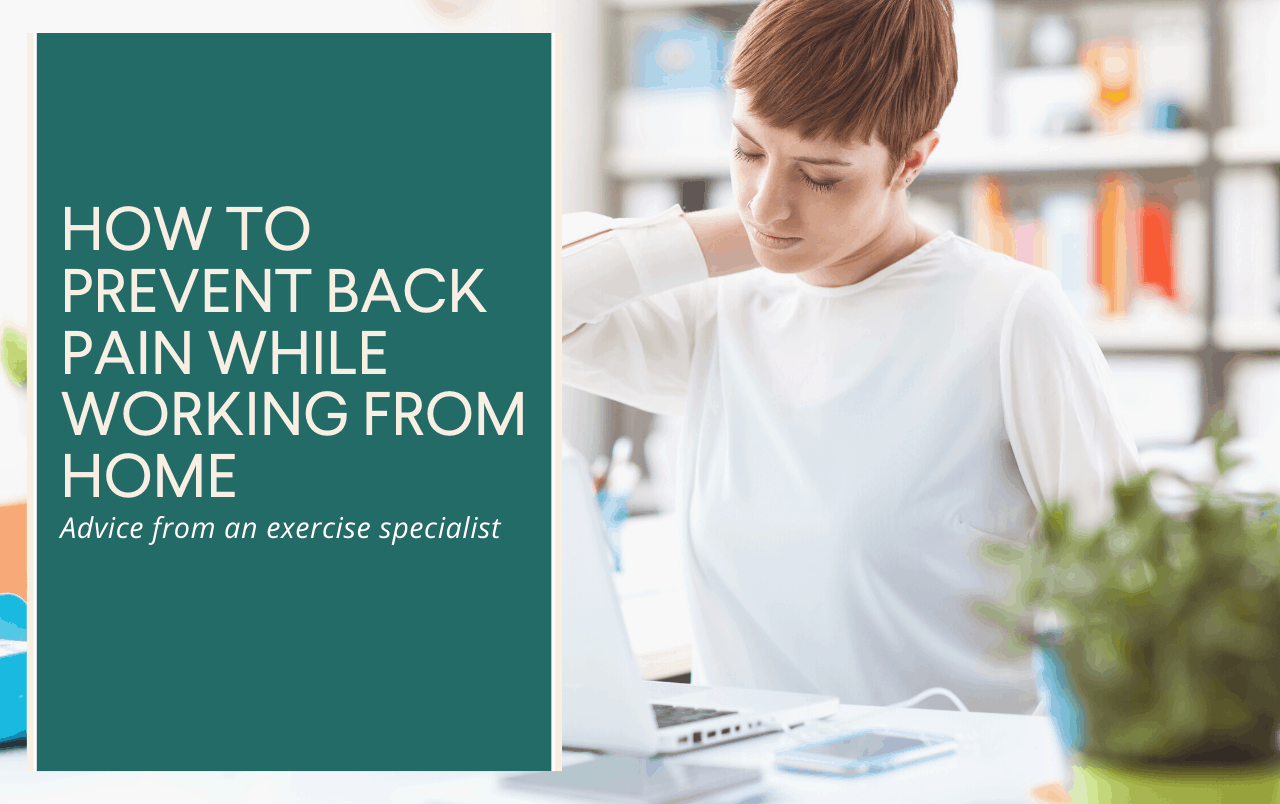Millions of employees in the U.S. and around the world have transitioned to remote working in response to COVID-19. Among many other changes, this means leaving behind the workstations employees are used to and adjusting to typing and making calls on couches and at kitchen tables.
These home spaces are rarely designed for eight hours a day of good posture. Poor posture can contribute to or worsen low back and neck pain. Ongoing pain, in turn, can make focusing even more difficult than it already may be in this uncertain, stressful time.
HR professionals should encourage teams to create as ergonomic a work setup as possible to prevent and reduce back and neck pain, especially as work-from-home arrangements stretch on for weeks. We spoke with Jim White, exercise specialist at Fern Health and certified personal trainer, about ways remote workers can stay comfortable and prevent or reduce back and neck pain at work.
7 ways remote workers can reduce back pain
1. Check your posture. Whether you’re sitting at your kitchen table, in your home office, or on the couch, posture alignment matters. Sitting in a slouched position can overstretch your spinal ligaments and strain your spinal discs. Spinal discs are fluid-filled cushions that protect the vertebrae from rubbing together. Follow this posture checklist when setting yourself up for your workday:
- When sitting, your elbows should be at ninety degrees, with your wrists aligned with your elbows.
- Your back should be in a straight line all the way up to the top of your head. Try imagining a string pulling at the top of your head and straightening your spine.
- Don’t let your pelvis rotate forward. This creates a curve in your lower back.
- Keep your shoulders level.
- Keep the top of your computer screen at eye level. Positioning your computer too high or too low can contribute to neck and shoulder pain.
2. Make your couch more ergonomic. If your living room couch is your main option for working from home, small changes can help reduce slouching. Adjust pillows so your low back is supported, particularly if you have a soft couch that’s easy to sink into. Place another pillow on your lap to raise your computer screen higher up so it’s closer to eye level.
3. Try working from a different room. One potential benefit of working from home is that you may have a few different areas in your house or apartment where you can set up. For example, if you have a high kitchen counter or dresser, create your own standing desk.
4. Add low back support. You may not have the same ergonomic office chair at your home that you do at work. If you’re feeling uncomfortable, place a rolled-up towel at the base of your spine while sitting. This can help you remember to sit up straight and provide you with some stability.
5. Listen to your body. If your lower back feels stiff when you stand up, or if your feet or legs “fall asleep” while you’re sitting, these are your body’s ways of telling you to change your position. Adjust your sitting, or try sitting in a different chair for a while. Taking a stretch break can help, too.
6. Keep exercising. Without your daily commute and with gyms and exercise studios closing, it can be hard to keep your activity levels up. Exercise at home with YouTube videos, do a mini strength training program with free weights if you have them, or build your own simple yoga routine with poses you already know. Exercise is one of the most powerful ways to reduce back pain and keep your immune system strong, too. Aerobic exercise can also help reduce feelings of anxiety, which are understandable under these circumstances and can exacerbate pain symptoms.
7. Try simple stretches to relieve lower back pain. In a regular office, most employees don’t get the chance to take a big stretch or a quick yoga break. Take advantage of your at-home setup to stand and try a midday stretch break, especially if your lower back is feeling stiff. If you’re able to, try these simple exercises. Please note that these exercises may not be safe or tolerable for everyone.
Knee-to-chest stretch:
- Lie down on the floor on a mat or towel with your knees bent and feet flat on the floor.
- Clasp your hands around your right lower leg or behind your right knee.
- Keeping your left foot on your floor, gently pull your right leg towards your chest until you feel a slight stretch in your lower back.
- Hold your leg against your chest for 30 seconds, then release.
- Release your right leg, and repeat these steps with your left leg.
- Repeat as you are able to or is tolerable, up to three times for each leg.
Cat-cow stretch:
- Get on your hands and knees on a mat or towel. This is the starting position.
- Start with the cat pose: Arch your back by pulling in your stomach and dropping your head down. You should feel a gentle stretch in both your neck and back. Hold for five to ten seconds.
- Return to your starting position.
- Start the cow pose: Lift your head up and push your pelvis down, curving your back towards the floor. Hold for five to ten seconds.
- Return to the starting position.
- Repeat as you are able to or is tolerable, up to 15 to 20 times.
Hamstring stretch:
Tight hamstrings – the muscles on the back of your legs – can contribute to low back pain. If you have tight hamstrings, this stretch may be challenging, so be careful not to overdo it. You should feel a gentle stretch. If the stretch becomes very painful, stop.
- Sit on the floor with your legs straight out in front of you.
- Loop a bath towel or belt around the bottoms of your feet at the heels.
- Gently bend forward at the hips, keeping your back straight. Bring your belly as close to your legs as you can. If this is a challenge, hold on further down your towel or belt to lengthen your reach.
- Hold for 30 seconds, relax for 30 seconds, and repeat up to three times.
Working from home is a significant adjustment for those who are new to it. A supportive workspace can help ensure that back pain isn’t another stressor or distraction during a difficult time. Listening to your body, taking breaks, maintaining correct posture, and continuing to exercise can all help ease the transition to at-home work and keep teams comfortable.






